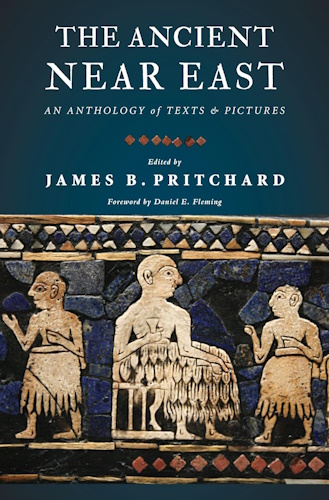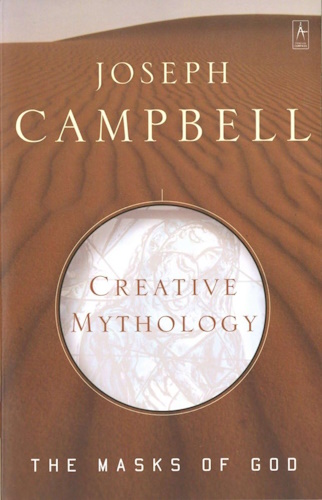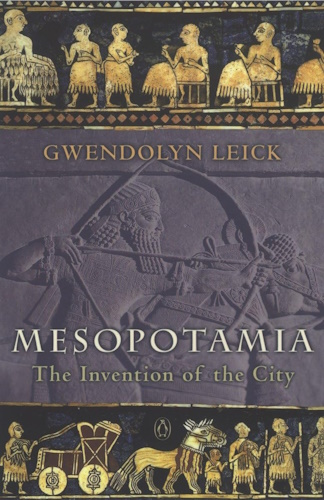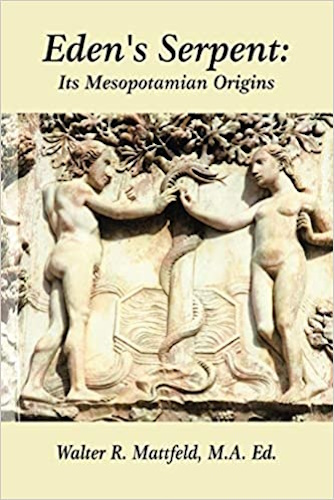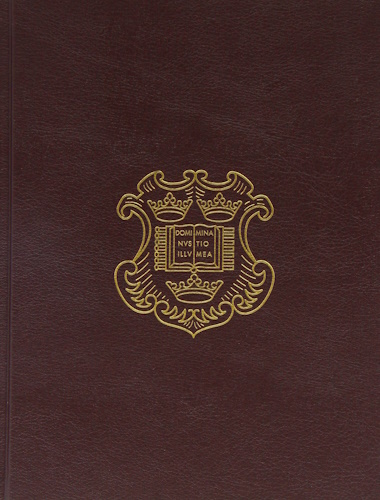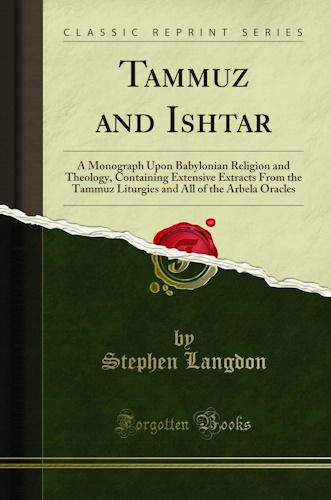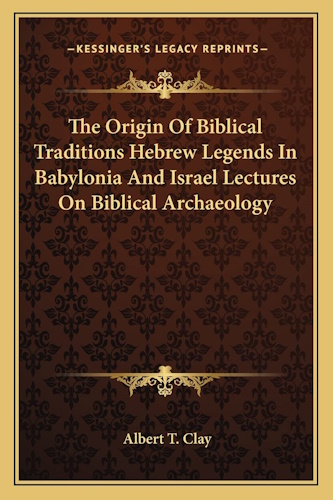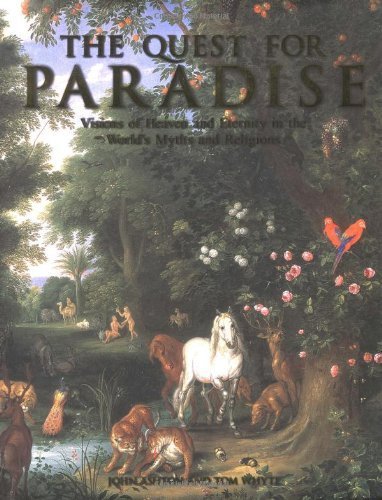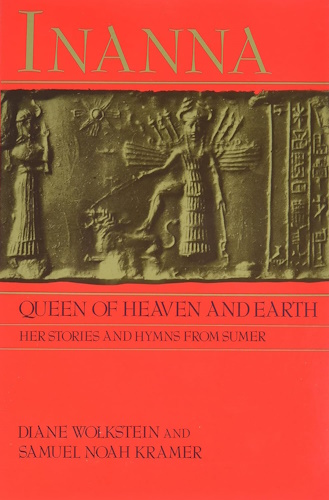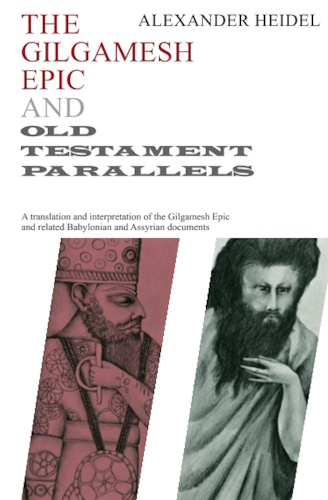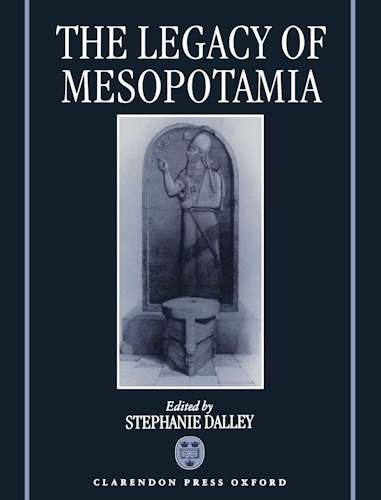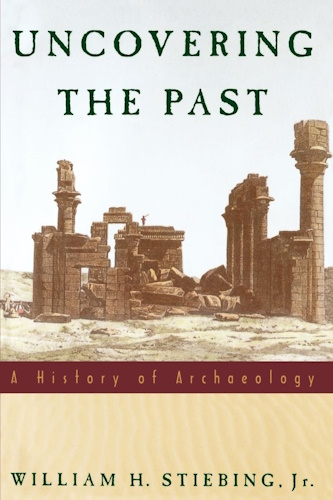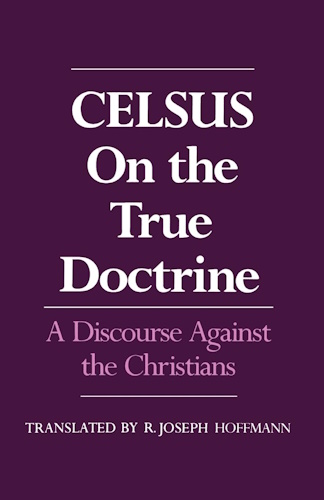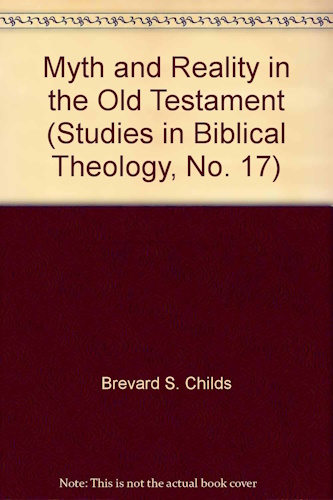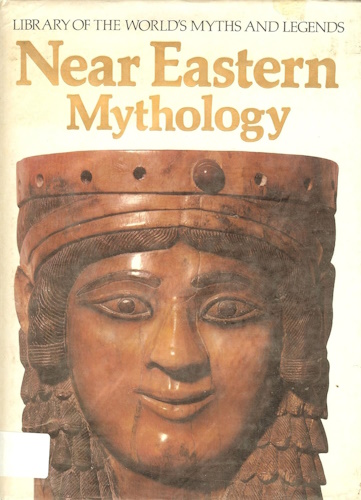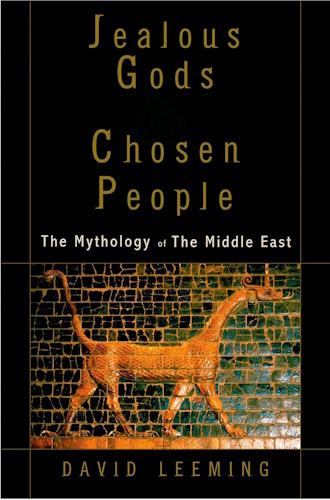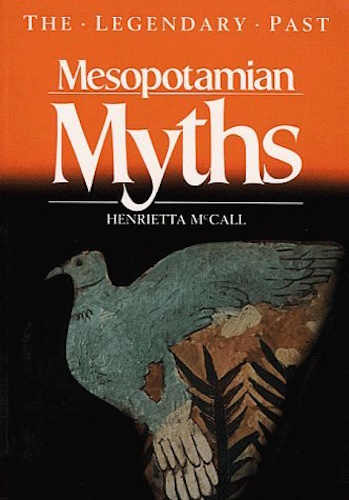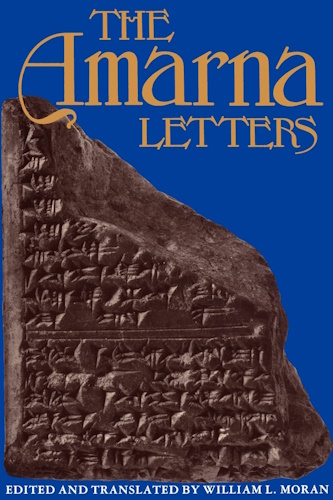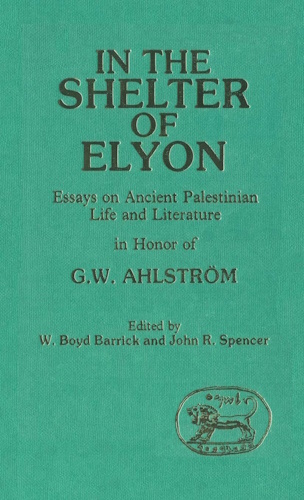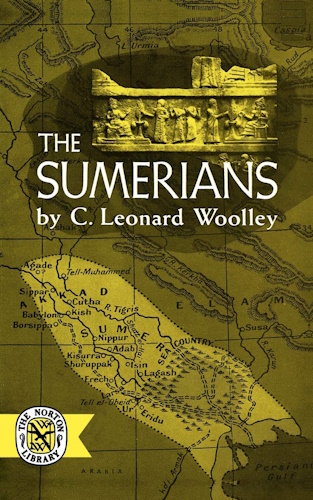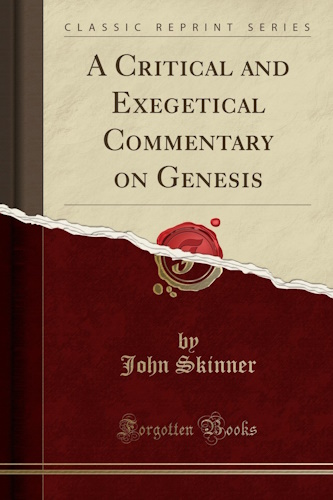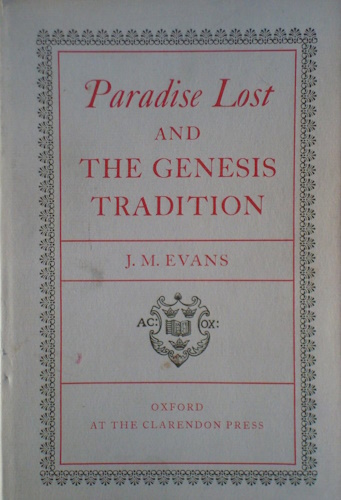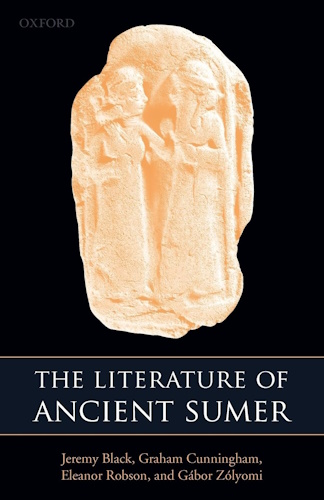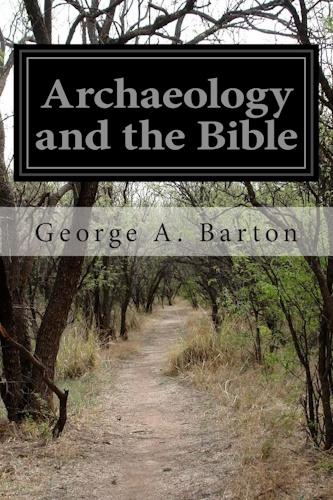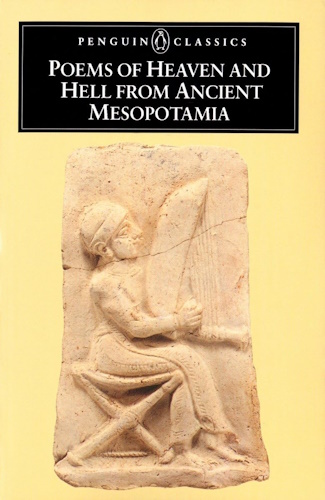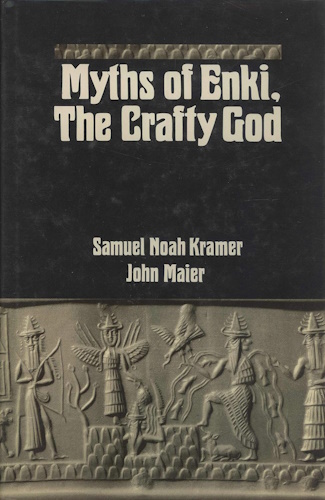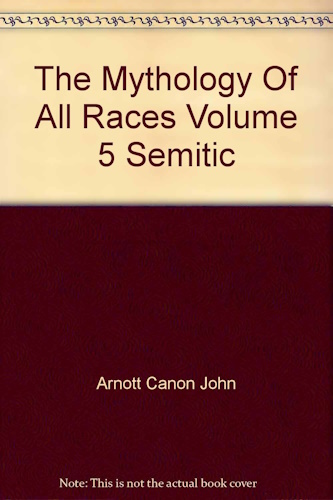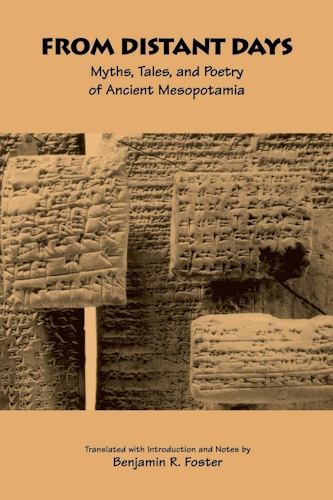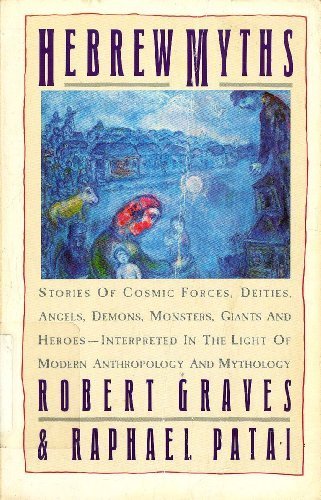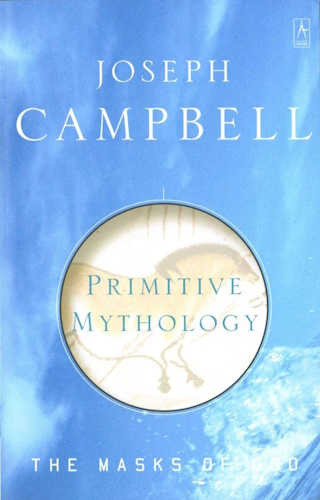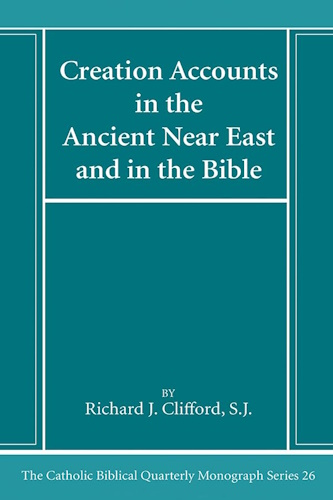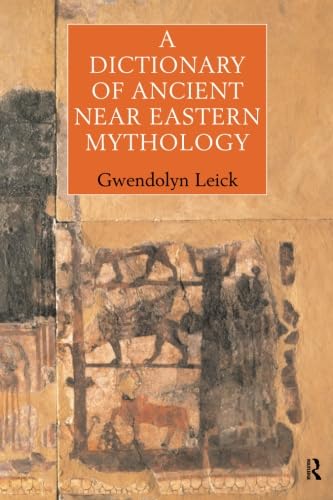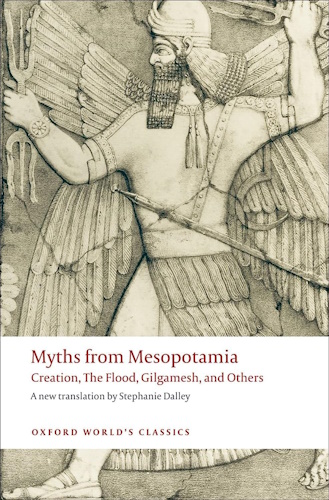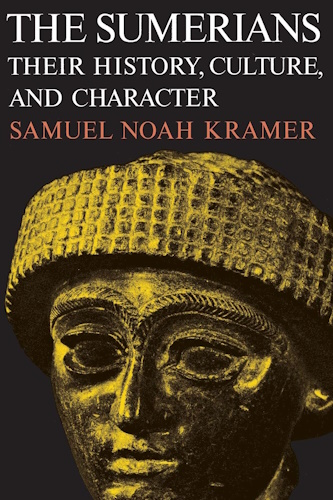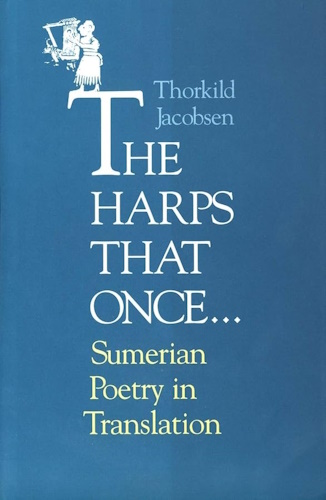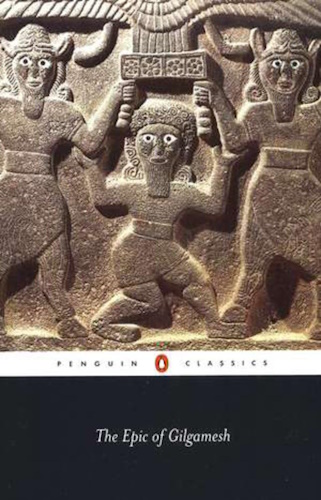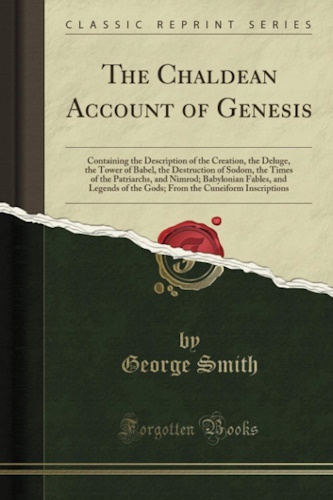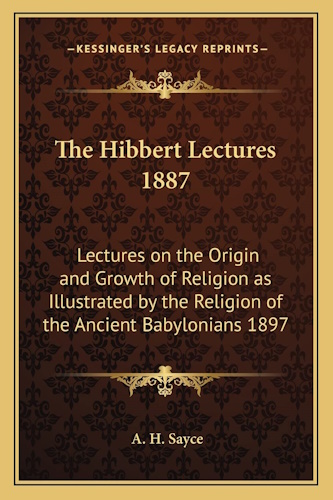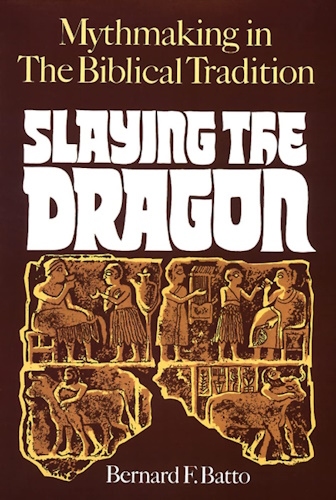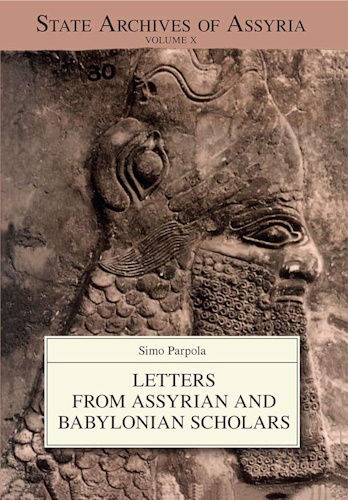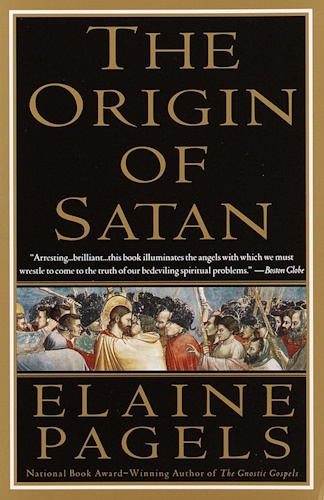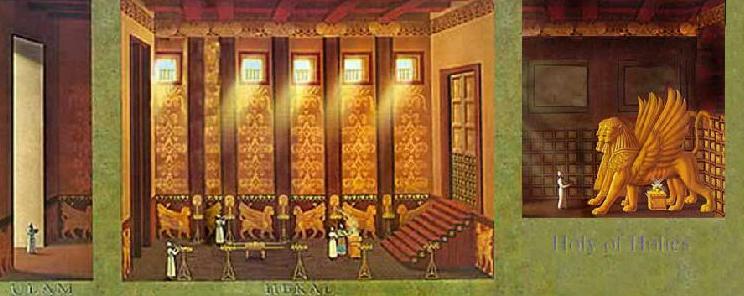![]()
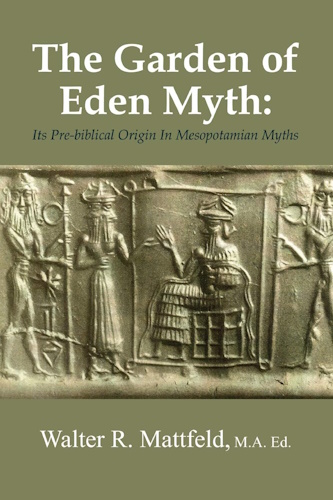
Bible Origins
Parallels Between Enkidu and Adam
In the Epic of Gilgamesh and the Garden of Eden
by
Walter Reinhold Warttig Mattfeld y d la Torre, M.A. Ed.
e-mail contact
21 May 2007
Revisions through: 01 May 2008
![]()
I understand that the Hebrews are taking various motifs and concepts appearing earlier in Sumerian and Mesopotamian myths of the 3rd-2nd millenniums B.C. and recasting them in order to refute, challenge and deny them. Below are some examples of parallels, some of which are for me in some instances deliberate inversions or reversals of Mesopotamian themes and understandings of the relationship existing between Primeval Naked Man and his Creators. Adam and Eve's removal from the garden in Eden is for me a recasting of the Igigi gods rebellion and their removal from the Anunnaki gods' gardens at Eridu and Nippur as related in the Atrahasis Epic. The Garden of Eden account is drawing on motifs and concepts from several Mesopotamian sources, not just the Epic of Gilgamesh, and recasting them to create a new story about man's origins in a location called Eden. Adam fails to attain immortality, the same can be said for Enkidu and Gilgamesh (immortality also eludes Adapa of the Adapa and the Southwind myth, some of whose motifs have been combined with motifs identified with Enkidu and associated with Adam by the Hebrews).
Please click here for additional parallels between Shamhat and Eve.
Please click here for a map showing the possible location of the watering hole where Enkidu (Adam) meet Shamhat (Eve) in the wilderness of edin near Uruk, said watering hole being transformed into a garden in Eden by the Hebrews.
Adam is portrayed as "listening to his wife's voice," suggesting she urged him to eat. This appears to be a recast of Enkidu listening to the voice of Shamhat who urges him to eat the bread set before him by the shepherds in the edin which he earlier balked at:
Genesis 3:17 RSV
"And to Adam he said, "Because you have listened to the voice of your wife, and eaten of the tree of which I commanded you, "You shall not eat, cursed is the ground because of you."
Adam' s eating involved the acquistion thereby of "knowledge" (the knowledge of good and evil). I understand that this Hebraic motif of acquiring knowledge via an act of eating is in part derived (having been recast and transformed) from Enkidu's eating the bread set before him.
It is stressed that Enkidu DOES NOT KNOW the eating of bread, he DOES NOT KNOW the drinking of alcoholic beverages (wine or beer?).
AFTER CONSUMING THESE ITEMS HE NOW "KNOWS" THEM.
He has _acquired knowledge by eating_ (and drinking) with Shamhat's urging. Had she not been present he would _not have acquired the knowledge_ of eating bread and drinking alcoholic drink.
I understand that this motif of Enkidu's acquisition of knowledge via eating because of Shamhat's urging has been recast as Eve urging Adam to eat and thereby acquiring knowledge (of good and evil). Put another way, one acquires the knowledge of what a food item tastes like after eating it. One also acquires knowledge of what wine or beer tastes like having consumed it and one comes "to know" its effects on the body as "lightheadedness or drunkeness." One also "knows how" to eat a particular food item: bread is torn by hand or cut with a knife, or bitten off in mouthfuls. So the act of eating does involve "the acquisiton of knowledge" in various forms to some degree.
The "new twist" here as applied to this motif of acquiring knowledge via eating is that the Hebrews equate this with a nude Adam suddenly realizing he is naked and in shame he clothes himself.
Where are the Hebrews getting this "new twist" from?
Enkidu is portrayed like Adam as a created being, he is made of clay and like Adam he has no father or mother. Enkidu dwells _naked_ in the edin, the uncultivated steppe with wild gazelles for companions. They are herbivores eating grass and he eats grass too, so they are of no danger to each other, just as Adam and his animal companions were herbivores and of no danger to each other.
The Hebrews have taken Enkidu's nakedness and made it into Adam's nakedness. They have _changed the storyline_ however by introducing a "new twist": Adam _after_ eating comes to realize he is naked and he clothes himself in shame, and leaves the garden of Eden.
Enkidu who roamed Edin was _not_ ashamed, just as Adam and Eve were not ashamed in Eden.
Enkidu clothes himself before leaving the edin. He is offered bread by the shepherds who pasture their flocks in the edin.
_AFTER_ EATING the bread, Enkidu is given a change of clothes more befitting a man and is declared to now be "a human."
Note the sequence: A formerly naked man of edin (1) eats, then (2) he is clothed, then (3) he leaves edin the steppe for Uruk with Shamhat.
There is no embarrassment here on Enkidu's part. No god is outraged that a naked man has learned it is wrong to be naked in edin.
The Hebrews are _recasting_ the motifs appearing in the Epic of Gilgamesh into a NEW STORY about the "origin" of man in Eden via "new twists" or "transformations" of events in Enkidu's life in the edin.
Enkidu _is not_ presented as "first man" nor is Shamhat presented as "first woman," Adam and Eve being "first humans" is another _new twist_ to the story.
Enkidu's name is composed of three Sumerian words: en ("lord"), ki ("earth"), and du ("good"), thus it can be translated to mean "the lord of the good earth." The Bible suggests that God has created the earth for man's benefit and he is to take dominion over it and over all of its beasts. In other words Adam is in a sense "the lord of the good earth" and all that dwells upon it. God in creating the earth, beasts and man each timne pronounces the created as "good." I thus understand Enkidu as a pre-biblical prototype of Adam, in his very name, anticipates Adam being portrayed as the "lord of the good earth."
Genesis 1:24-31 RSV
"And God said, 'Let the earth bring forth living creatures...And God saw that it was good. Then God said, "Let us make man in our image, after our likeness; and let them have domion over the sea, and the birds of the air, and over the cattle, and over all the earth, and over every creeping thing that creeps upon the earth." So God created man in his own image...and God said to them, "Be fruitful and multiply, and fill the earth and subdue it; and have dominion...And God saw everything that he had made, and behold it was very good."
Adam and Eve as "first man and woman" are placed in a garden _in_ Eden. Enkidu and Shamhat do not meet each other in a god's garden, they meet at a watering hole in a desolate steppe called edin. Where then are the Hebrews getting the notion that man (and woman) were created by a God and placed in his garden to care for it?
They are applying _new twists_ to Mesopotamian concepts and combining themes and motifs from _several different_ myths.
Man is created and placed in a god's city-garden at Eridu and at Nippur according to the myths. His job is to care for these gardens, providing water via irrigation canals and he is to plant, harvest and present the produce to the gods in temples for their nourishment. Man is to be an agricultural slave replacing the Igigi gods who objected the arduous toil in the Anunnaki gods' city-gardens. Man was created to relieve the Igigi of agricultural toil. Man will provide the gods' needs: food, shelter and clothing that the gods may be at rest from toil on the earth for all eternity. Genesis objects to these notions and via a series of inversions, reversals and recastings has cretaed a _new story_ which _denies, refutes and challenges_ the Mesopotamian stories of how, why and where man came to made and his purpose in life.
"Enkidu did not know to eat bread,
Nor had he ever learned to drink beer!
The harlot made ready to speak, saying to Enkidu:
"Eat the bread, Enkidu, the staff of life,
Drink the beer, the custom of the land."
Enkidu ate the bread until he was sated.
He drank seven juglets of the beer...
He...turned into a man...
He put on clothing..."
–(p. 14. Benjamin R. Foster. The Epic of Gilgamesh. New York & London. W.W. Norton & Company. 2001)
"They set bread before him,
He gagged, he gaped at it,
stared.
Enkidu had not known about the eating of cooked food,
About drinking strong wine
no one had taught him.
The love-priestess opened her mouth,
said to Enkidu:
"Eat the food, Enkidu,
as life requires.
Drink the wine, as is the custom of the land."
Enkidu ate the food
till he was full.
He drank the wine,
seven goblets.
His brain became loose, he became childish:
his heart became light...
he became a man...
He put on clothes;
he was like a groom.
(pp. 92-94. John Gardner & John Maier. Gilgamesh, Translated from the Sin-Leqi-Unninni Version. New York. Vintage Books, A Division of Random House. 1984, 1985)
The eating of "forbidden food" (bread and beer derived from the "off-limits" grain fields or city-gardens of the gods tilled by man) by Enkidu did not give him knowledge of good and evil. The myth stresses that after consuming the bread and alcoholic drink a "transformation takes place," Enkidu is declared to now be "like a human" (others translate "like a man") implying he was earlier an ignorant naked hairy beast eating grass and drinking water with the animals of edin the steppe. I understand Enkidu's consumption of food and his thereupon being given a new robe by the shepheds has not only made him into a civilized human he is also now "like a god"! For gods consume bread and alcoholic drink and wear clothes, they live in cities, and have gardens. This life style was not available earlier to Enkidu. That is to say Enkidu "_becomes like a god_" in that he now _lives like a god_, "knowing it is wrong to be naked," he wears clothes like a god, he eats bread like a god, he drinks alcoholic beverages like a god, and he dwells in a city like a god. In other words Enkidu was in the beginning living "like a wild animal," a "beast," and the food grown in the gods' gardens was off limits to the beasts of edin, including wild naked-man-the-beast. All this has been recast in Genesis as Adam and Eve after eating the forbidden fruit becoming like God, knowing good and evil," and clothing themselves in shame. Enkidu and Shamhat's leaving the watering hole of edin to live in the city of Uruk has been recast in Genesis as man after having been expelled from Eden by an enraged God, eventually settling in cities (Cain creating the city of Enoch in the land of Nod).
| Mesopotamian Myths: |
Biblical "recasting" and "transformation": |
|---|---|
|
Edin is Sumerian for uncultivated steppe, plain, desert, wilderness and associated with Mesopotamia, particuarly ancient Sumer. |
Eden is a location "in the east." Haran where Abraham once lived is described as being "in the east" and it lies in Mesopotamia (cf.Ge 29:1-4) |
|
Uncultivated edin has two streams which water it, the Sumerian Id-igna, Akkadian Id-iglat (Tigris) and Sumerian Buranum, Akkadian Phrat (Euphrates). |
Eden possesses two rivers called the Hiddekel and Euphrates. |
|
Naked primeval man (Enkidu) is CREATED by a goddess (Aruru) and placed in edin. He has no father or mother |
Naked Primeval man (Adam) is CREATED by a God and placed in Eden. He has no father or mother. |
|
En-ki-du means "lord of the good earth." |
Adam is made the "lord of the good earth" by God, having "dominion" over God's creation which is declared as "good" (Ge 1:24-31). |
|
The Epic of Gilgamesh describes Enkidu as the wild man of _edin_ in his confrontation with Shamhat. The Akkadian scribe is using the Sumerian LOGOGRAM (EDIN) in _lieu_ of the Akkadian word _seru_ or _seri_ meaning "steppe." |
Adam meets Eve in a location called `Eden. |
|
Wild animals are Naked man's (Enkidu's) companions in edin. |
Naked Adam has wild animals for companions in Eden. |
|
Naked man's (Enkidu's) animal companions offer him no harm for they are herbivores (Gazelles) and he is not a threat to them because he eats grass (He is a vegetarian). |
Naked Adam's animal companions eat green plants he eats fruits and herbs (both are herbivores) so no harm is offered either. |
|
Naked man (Enkidu) meets a naked woman in edin, she supplants his animals as his companion. |
Naked Adam meets a naked Eve in Eden and she is declared a more fit companion than the animals. |
|
Naked man's (Enkidu's) and the animal's heart's DELIGHT is THE WATER at edin's watering hole. |
Eden according to some scholars means DELIGHT or a place "well-WATERED" according to others. |
|
Naked man (Enkidu) learns in edin _after_ contact with a naked woman (Shamhat) it is wrong to be naked. |
Naked Adam in Eden _after_ contact with a naked woman, Eve, learns it is wrong to be naked. |
|
The gods create fruit-tree city-gardens _before_ man's creation. These gardens are surrounded by uncultivated land called the edin. |
God creates a fruit-tree _garden_ before man's creation and this garden lies _in_ a location called Eden. |
|
The gods later create man to till and care for their fruit-tree city-gardens surrounded by the uncultivated edin. |
God creates Adam to till and care for his fruit-tree garden surrounded by a location called Eden. |
|
Cylinder seals show Naked man tilling the gods' city-gardens. Naked men serve their clothed gods. Please click here for pictures of naked man tilling the god's gardens in Mesopotamia. |
Naked Adam tills and tends God's garden in Eden. Naked Adam serves a clothed God. |
|
Naked man (Enkidu) leaves edin's watering hole and his animal companions with a naked woman (Shamhat) both clothing their nakedness before leaving edin. |
Naked Adam and Naked Eve, clothe themselves before leaving the garden _in_ Eden. |
|
No god is outraged over primeval man's learning in edin that it wrong to be naked and expells him from this location. |
An outraged God upon discovering that man has learned in Eden it is wrong to be naked, and clothed himself, expells him cursing the ground on his behalf. |
|
The naked woman (Shamhat) who caused edin's naked man (Enkidu) to realize it is wrong to be naked, is NOT CURSED by her god. |
Naked Eve of Eden's garden is CURSED by her God. |
|
The formerly naked man of edin (Enkidu) blames the formerly naked woman of edin (Shamhat) for his imminent death and loss of innocence. |
Adam blames Eve for his loss of innocence, she gave him a forbidden fruit to ate. He will lose his life for following her instead of God. |
|
Enkidu initially balks at eating bread set before him by edin's shepherds, he does "NOT KNOW" the eating of bread, he eats grass with gazelles. Shamat tells him he MUST EAT it, it is the custom of the land! He submits to her will and eats the bread. Now it can be said Enkidu "KNOWS" the eating of bread, HE HAS ACQUIRED KNOWLEDGE VIA EATING (He "knows" now the eating of bread where earlier he "knew" only the eating of grass). |
Adam is warned NOT to eat by God a forbidden fruit. Eve is a recast of Shamhat telling Enkidu to eat. The motif of primal naked man acquiring knowledge via an act of eating is a recast of Enkidu's _acquiring knowledge via eating_, He _knows_ now the eating of bread, but the Hebrews have recast this "knowing" as eating fruit to acquire knowledge of good and evil instead of "knowing" of the eating of bread. The knowledge of good and evil is equated with Adam realizing it is wrong to be naked and clothing himself. This is a recast of Enkidu being originally naked in edin then after eating bread at the shepherd's camp in the edin, donning clothes (cf. below). |
|
After eating the shepherd's bread Enkidu is declared to be a "Human" (not a grass-eating beast any longer) he then puts on clothing at the shepherd's camp in the edin. |
Recast as Adam eating to acquire knowledge, then after eating he dons clothing. Enkidu did not don clothing after eating because he was embarassed about being naked (as did Adam); this is an example of the Hebrews recasting motifs from the Epic of Gilgamesh in order to craft an entirely new story: The "origins" of mankind in a Garden of Eden vs. the Mesopotamian story of how two men, Enkidu and Gilgamesh failed to attain immortality. |
|
Gods eat bread, not grass and wear clothes. Enkidu becomes like a god in that he too now eats bread like a god, is clothed like a god, and knows like a god it is wrong to be naked. |
After eating Adam puts on clothing, he has become like a God knowing it is wrong to be naked. |
|
The formerly naked man of edin (Enkidu) CURSES the formerly naked woman of edin, blaming her for his loss of innocence and impending death. |
God, not Adam, CURSES Eve. |
|
Enkidu's god (Shamash) defends Shamhat and a chastened Enkidu withdraws the curse and gives her a blessing instead. Shamash tells Enkidu the Harlot gave him a fine robe to cover his nakedness and food and drink fit for a god to consume. She has given him blessings of civilized life, ending his savage existence. Shamash _approved_ of naked man's acquistion of clothing in edin, he approved of man's learning it is wrong to be naked. |
God does not defend Eve, he blames her for enticing Adam to sin. God is outraged that a naked Adam and Eve are clothed, for this means they have knowledge of good and evil and know it is wrong for adults to be naked. In a rage God expels the formerly naked Adam and Eve. |
|
Enkidu CURSES the Hunter who brought Shamhat to edin's watering hole to ensnare him and separate him from his animal companions, asking his god to DIMINISH the Hunter's profits. |
God CURSES the ground on Adam's behalf. Its yields will be reduced thus Adam's profits will be DIMINISHED. A "new twist" has been applied here. Instead of diminished profits from hunting activities it is diminished profits from gardening. |
|
The formerly naked man (Enkidu) and woman (Shamhat) of edin's watering hole eventually die. |
Adam and Eve, formerly of the garden in Eden, die. |
|
The gods NEVER EXPELL MAN FROM THEIR CITY-GARDENS filled with fruit-trees because they would have to then care for their gardens themselves, an onerous task they dreaded. |
God EXPELLS man from his fruit-tree garden, he does NOT need man to care for it on his behalf in order that man will provide God with produce to eat like the Mesopotamian gods. |
|
Man was created to care for the god's city-gardens filled with fruit-trees, to feed the gods this produce, giving the gods freedom from agricultural toil. The gods are fed twice a day meals by man. |
Israel is informed by its God that they are to feed him twice a day. God eats the very same foods grown on the earth as the Mesopotamian gods do. |
|
The Igigi gods rebelled against the arduous, back-breaking labor in building and maintaining irrigation ditches for the Anunnaki gods' gardens. Life is hell working in a god's garden. |
Genesis denies life is hell for a gardener in the garden of Eden. Gardening or tilling the soil for bread becomes hell only after the being expelled from God's garden. An inversion has occurred challenging Mesopotamian notions that life was hell for man from the very moment he was placed in the gods' gardens! |
|
The rebellion of Igigi was justified. Man is created to bear their burdens, to provide the gods with food, clothing and shelter. They welcomed their removal from the toil in the gods' gardens. For now they can fellowship with their former oppressors the Anunnaki gods, as both now oppress man. |
The Igigi's rebellion has been recast as Adam rebelling against God and being removed from his garden in Eden. An inversion has occured: Removal from a god's garden instead of being a blessing is presented as a curse and punishment! |
|
The gods' intent is that man will for all eternity toil in the gods' city-gardens, providing the gods with their gardens' produce so that the gods may be at ease, enjoying a "rest" from toil upon the earth for all eternity. |
Judaism, Christianity and Islam look forward to the day that their God will readmit banished man back into the Garden of Eden and enter into God's "rest." |
The Sumerian word for uncultivated steppeland is edin. The Epic of Gilgamesh although written in Akkadian which renders "steppe" as seru or seri, states unequivocally that Shamhat saw Enkidu at the watering hole as a wild man of "edin" (the steppe). How is it that the watering hole is described as being in _the edin_ instead of being in _the seru_? Akkadian scribes were trained in both Sumerian and Akkadian, they frequently used Sumerian LOGOGRAMS (cuneiform signs) as "substitutes" for Akkadian words. Hence Enkidu "the wild man of the steppe" was written using the Sumerian logogram (EDIN)! The scribe knew upon seeing this logogram that it was synonymous with the Akkadian word seru or seri, meaning steppe.
Professor Speiser on Enkidu's arrival at the watering hole in the steppe (steppe in Sumerian being edin, Akkadian seru), where wait Shamhat the harlot-priestess of Uruk and the Hunter (Note: the below bold print is transcribed by Heidel, which follows, into Akkadian):
"The creeping creatures came, their heart DELIGHTING in water.
But as for him, Enkidu, born in the hills-
With the gazelles he feeds on grass,
With the wild beasts he drinks at the watering-place,
With the creeping creatures his heart DELIGHTS in water-
The lass beheld him, the savage-man,
The barbarous fellow from the depths of the steppe:
"There he is, O lass, FREE THY BREASTS,
Bare thy bosom that he may possess thy ripeness!
Be not bashful! Welcome his ardor!
As soon as he sees thee, he will draw near to thee.
Lay aside thy cloth that he may rest upon thee.
Treat him, the savage, to a woman's task! Reject him will his wild beasts that grew up on his steppe,
As his love is drawn unto thee."
The lass FREED HER BREASTS, bared her bosom,
And he possessed her ripeness.
She was not bashful as she welcomed his ardor..."
–(p. 44. E. A. Speiser. "The Epic of Gilgamesh." James B. Pritchard. Editor. The Ancient Near East, An Anthology of Texts and Pictures. Princeton, New Jersey. Princeton University Press. 1958. paperback)
Heidel on Enkidu's heart "delighting" with the water of the watering hole in edin the steppe, Hebrew 'eden means "delight." Please note that Enkidu in the below verse is described in 1946 as a savage man from the depths of the steppe and that Heidel in his 1949 article on Sadu rendered "steppe" as Akkadian seru and Sumerian edin(emphasis mine):
"The animals came to the water, and their hearts were glad.
And as as for him, (for) Enkidu, whose birthplace is the open country,
(Who) eats grass with the gazelles,
Drinks with the game at the drinking-place,
(Whose) heart DELIGHTS with the animals at the water,
Him, the wild(?) man, the prostitute saw,
The savage man from the depths of the steppe."
–(p. 21. "The Epic of Gilgamesh." Alexander Heidel. The Epic of Gilgamesh and Old Testament Parallels. Chicago & London. University of Chicago Press. 1946, 1949, reprint of 1993)
Heidel reproduces the above words (which I have rendered above in bold print) from Spieser's translation of the Epic of Gilgamesh ("he" is in reference to Enkidu):
"...while on Tablet I. 4:7, he is called
itlu (GURUS) sag-ga-sa-a sa-qa-bal-ti seri (EDIN):
"The savage man from the midst of the seru."
–(cf. p. 233. Alexander Heidel. "A Special Usage of the Akkadian Term Sadu." pp. 233-235. The Journal of Near Eastern Studies. Vol. 8. No. 3. July 1949)
My thanks to Robert M. Whiting, PhD. of Helsinki, Finland, a professional Assyriologist (Managing Editor of the world-renown Neo-Assyrian Text Corpus Project, The Assyrian State Archives Series) for explaining to me that Heidel's 1949 transcription reveals that the scribe actually wrote the word "steppe" using the Sumerian LOGOGRAM (EDIN), and that modern scholars "read" (EDIN) as a substitution for seri (seru). Heidel's transcription also reveals that the Akkadian word itlu was actually written as (GURUS) another Sumerian LOGOGRAM. Whiting explained that the use of Sumerian logograms is quite common in Akkadian compositions.
Whiting's explanation solved the mystery for me of how _seru_ the "steppe" came to become Hebrew `eden, I realized that the Hebrews had apparently morphed the Sumerian logogram (EDIN), used in lieu of seru in the Epic of Gilgamesh, into 'eden! Hebrew `eden means DELIGHT, and we are told when Enkidu appeared at the watering hole in EDIN, his heart's DELIGHT was its water. So, I understand the Hebrews took this notion of a primal naked man's DELIGHT over water and morphed EDIN's watering hole into Hebrew `eden, a place of DELIGHT (The Mystery solved at long last, after some 3000 years!). In other words, the story of Enkidu and Gilgamesh began as Sumerian tales, and the steppe Enkidu wandered, in Sumerian was rendered edin, and the Sumerian logogram edin appearing in the Akkadian written Epic of Gilgamesh is perhaps a vestige of the archaic Sumerian rendering which came to "read" as seru. Another example of Hebrew "morphing" of foreign words is the city-state appearing in Neo-Assyrian annals as Bit Adini, in the Hebrew Bible it is "morphed" into Beth-Eden ("House of Delight"), while Babylon or Akkadian Babel meaning the "gate of god" (bab= gate, il=god) was "morphed" into balal meaning "confusion." The Chaldeans, Neo-Assyrian Kaldu, were "morphed" into the Kasdim. Neo-Assyrian Urartu was morphed into Ararat by the Hebrews.
Special Update 13 November 2007 on the appearance of the word EDIN in the Epic of Gilgamesh:
Yesterday (12 November 2007) as I was musing to myself over Heidel's 1949 transcription of Akkadian seru, seri being rendered by the Sumerian logogram (EDIN), I wondered to myself _just how many times_ does edin, (EDIN), EDIN, appear in this composition?
That is to say was Heidel's transcription the _one and only occurrence_ of this word in the Epic of Gilgamesh?
I sent an e-mail to Professor Andrew George who had recently authored one of the most comprehensive studies of the Epic of Gilgamesh in its various recensions and posed this question to him. He very graciously replied within 24 hours that EDIN appears _innumerable_ times throughout the 12 clay tablets that make up the Epic of Gilgamesh and he referred me to his own research posted on the internet.
This research is divided into the 12 tablets of the Epic and consists of English transliterations of the Akkadian words appearing in the Gilgamesh texts by verse and line numbers. Professor George provides several recensions for any given verse revealing the variations. To read this research one will need to first download a version of Adobe Acrobat Reader for reading PDF files.
Using the "Find" key from the Adobe Acrobat Reader I plugged in the word edin and I came up with some 74 "hits" for EDIN for the 12 tablets which contain the Epic of Gilgamesh (these 74 "hits" include the various recensions). The Sumerian logogram EDIN appears in various forms (with various suffixes)such as: EDIN-ki, EDIN-su, EDIN-ia, and EDIN-ka.
My thanks to Professor George for directing me to his published research on the internet.
Please click here to access Professor George's English transliteration of the Akkadian words and their appearance in various recensions of the Epic of Gilgamesh, showing the Sumerian logogram EDIN.
EDIN ("read" as Akkadian seru, seri, tseri) apparently has two meanings. Firstly, it means "back" or "upper side," and secondly, by analogy, the uncultivated steppe land that abuts the cultivated and watered lands was envisioned as "the back," (the backland or hinterlands, the wilderness, or the wilds where roamed wild animals: antelope, onagers, lions, and shepherds with goats and sheep).
Professor George alerted me that in his English translation of the Epic of Gilgamesh, he rendered EDIN as "the wild" (cf. Andrew George. The Epic of Gilgamesh. London. Penguin Books. 1999, 2000, 2003).
I have gone through my copy of the aforementioned book and noted "the wild" appears some 74 times! Enkidu is described as born in "the wild," being like a panther of "the wild," and being like an ass of "the wild," while Gilgamesh is described as wandering "the wild" mourning Enkidu's death, slaying and eating the beasts of "the wild" (wild bulls, bears, hyenas, panthers, cheetahs, jackals. wild asses, onagers). Siduri the barmaid and later Uta-napishtim (of Dilmun) asks him why he wanders "the wild" seeking immortality. Gilgamesh wandering about _in_ "the wild" or EDIN after Enkidu's death seeks immortality and Genesis has Adam _in_ an Eden failing to attain immortality and facing death like Gilgamesh and Enkidu. That is to say, Genesis' Eden is associated with the themes of life and death, immortality and mortality; the EDIN wandered by Enkidu and Gilgamesh is _also_ associated with the same motifs or themes.
I have R. Campbell Thompson's Epic of Gilgamesh, Text, Transliteration and Notes (Oxford University Press. 1930) and should alert my readers that he does _not_ render steppe with the Sumerian logogram edin (EDIN), instead he renders steppe as seri.
In other words you will _not_ find the word EDIN "anywhere" in Thompson's English transliteration of this epic.
If you "want to see" the Sumerian logogram _EDIN_ in the Epic of Gilgamesh you will have to access Professor George's on-line transliteration mentioned above!
Andrew George is a Professor of Babylonian at the School of Oriental and African Studies, University of London, London, England. He is the author of: The Babylonian Gilgamesh Epic, Introduction, Critical Edition and Cuneiform Texts. Oxford University Press. Published 2003. 1176 pages with drawings and photos.
Eden from Strongs' Concordance Hebrew and Chaldee Dictionary (James Strong. Strong's Exhaustive Concordance. Waco, Texas. Word Books. 1977):
5727
'adan, aw-dan'; a primitive root; to be soft or pleasant; fig. and reflex. to live voluptuously: delight self.
5729
`eden, eh'den; from 5727; pleasure: Eden, a place in Mesopotamia: -Eden.
5730
'eden. ay'den: or (fem.) 'ednah; from 5727; pleasure: delicate, delight, pleasure.
5731
'Eden, ay'den; the same as 5730 (masc.): Eden, the region of Adam's home: - Eden.
This research on the pre-biblical origins of Eden and its garden has noted that professional scholars are in disagreement with each other. Some have suggested Genesis' Eden is ultimately derived from Sumerian Edin, others object. The reason for their objection is primarily three reasons:
(1) Genesis' Eden has an ayin accent or phoneme: `eden whereas Sumerian edin does not.
(2) Biblical Eden appears to be derived from `dn, a root meaning "delight, enjoy, lushness, or a place well-watered" whereas Sumerian edin means "back" and refers to the "backland" or uncultivated steppe, sometimes rendered as the wilderness, the wilds, or desert, depending on the scholar.
(3) The argument has been made that the Akkadian (Babylonian) word edinu appears only _once_ in a syllabary and hence its survival down through the ages to become the biblical `eden is rejected. Please click here for A.R. Millard's article on the "Etymology of Eden" (1984) and why some scholars reject Sumerian edin or Akkadian edinu being what `eden was derived from.
Professor Sayce on Eden (1898), note: today Zeru is rendered variously as Seru, Seri, Tseru by modern Assyriologists:
"Eden means delight in Hebrew...The cuneiform inscriptions have, however, cleared up the geography of the garden of Eden. The Sumerian name of the 'plain' of Babylonia was Edin, which was adopted by the Semites under the form of Edinu. Its Assyrian equivalent was Zeru, corresponding to the Arabic Zor, the name still applied to the 'depression' between the Tigris and Euphrates."
(p. 643. Vol. 1. A. H. Sayce. "Eden." in James Hastings, editor, A Dictionary of the Bible, Dealing with its Language, Literature, and Contents Including the Biblical Theology. Edinburgh, Scotland. T. & T. Clark. 1898. Reprinted 1988 by Hendrickson Publishers, Peabody, Massachusetts)
Professor Millard (1984) on Eden's contested etymology (Emphasis mine):
"Current scholarship offers two explanations for "Eden"...One seeks the origin of the name in an Akkadian word borrowed from Sumerian, the other in the Semitic stem `dn, "abundant, lush". A reconsideration of the arguments and some newly available evidence presented here, strongly favouring the latter explanation over the former.
1. Eden an Akkadian word
The derivation of Eden from a Babylonian source arose after the recovery of part of a cuneiform tablet from Nineveh. This tablet contains a list of Sumerian word-signs in its central column, phoenetic renderings in the left hand column, and Akkadian equivalents in the right column, The list, known to-day as syllabary b, was apparently compiled late in the second millennium B.C., or early in the first. One entry (line 104) reads e-di-in: edin: e-di-nu, the next e-di-in: edin: se-e-ru. There is abundant evidence to show that edin was the normal Sumerian word for "steppe, plain", and for the second Akkadian equivalent, seru, in the same meaning. Friedrich Delitzsch, who knew of the text before its official publication, claimed the first Akkadian equivalent was identical with the Hebrew name. In his Wo lag das Paradies? Leipzig, 1881, pp. 4, 6, 79 f., he asserted that Hebrew `eden was not connected with words for "delight" from the base `dn, nor with the Aramean place-name Bit-Adini, but with this Sumero-Akkadian term...this example was widely accepted...A. H. Sayce wrote "The cuneiform inscriptions have, however, cleared up the greography of the garden of Eden. The Sumerian name of the plain of Babylonia was Edin, which was adopted by the Semites under the form Edinu." ...Some authorities were cautious about the relationship...E.A. Spieser wrote "Eden. Hebrew `eden, Akkadian edinu, based on Sumerian eden 'plain, steppe'...this word is rare in Akkadian but exceedingly common in Sumerian thus certifying the ultimate source as very ancient indeed (Genesis [Garden City, 1964], pp. 16, 19).
Attractive as this derivation seems, it faces major objections. One, restated by Claus Westermann, deserves attention. The Sumerian word begins with a simple /e/. That language has no /`/, and there is no ground for supposing one stood as the initial of the word in Akkadian, as it does in Hebrew.
The second objection arises from the history of the word in Babylonia. Speiser rightly observes that it is exceedingly common" in Sumerian. In Akkadian, on the other hand, its occurrence is limited to the single entry in Syllabary b cited above. Wherever "steppe" is to be expressed in Akkadian, and wherever there are Akkadian renderings of Sumerian compositions using edin the word normally found is seru, edinu never appears. This could be an accident, Akkadian texts containing edinu having escaped recovery. Yet given that seru so often translates edin, and that there are several known synonyms of seru in Akkadian, it seems safe to conclude that edinu was not a word current in Akkadian, but simply a learned scribal transcription of the Sumerian word-sign in the Syllabary. Again, a learned Hebrew scribe might have borrowed an extremely rare word from Babylonian because it could allow a popular etymology, but it can hardly be considered very likely, and is not the case with other Akkadian loan-words in Biblical Hebrew. The number of ancient readers who could have understood such ingenuity would not have been large.
Both the problem of the initial phoneme and the absence of edinu from any Akkadian text except one lexical list militate against the derivation of Hebrew `eden from an East Semitic and ultimately Sumerian word.
2. Eden a West Semitic word
Biblical Hebrew knows several words with `dn as their base and the common idea of "pleasure, luxury". Traditionally, Eden is linked with them...Those who prefer the Babylonian explanation assume with Speiser that the foreign word "came to be associated, naturally enough, with the homonymous but unrelated noun for 'enjoyment' ", while Skinner affirmed "There is no probability that the proper name was actually coined in this sense."...
(pp. 104-105. A. R. Millard. "The Etymology of Eden." in Vetus Testamentum. Vol. 34. Fasc. 1. Jan. 1984. pp. 103-106)
My vote has been cast with those scholars advocating edin is what is behind Genesis' Eden. I have given my reasons in this article:
(1) I understand that Eden (`eden) is a _deliberate misspelling_ of edin, intended to thereby _refute, deny and challenge_ the Mesopotamian presentation of man's origins and his relationship with his creator(s). Eden (`eden) meaning "delight" is an echo or reflection of naked Enkidu's and his herbivore animal companions' _delight_ in the water at the watering hole where he meets and is "undone" by a naked woman, Shamhat.
(2) I understand that motifs associated with the edin such as man's (Enkidu's) being naked, unaware it is wrong to be naked, wandering the edin with herbivore gazelles, he eating grass, have been recast as Adam and his animal companions in Eden being herbivores.
(3) I understand that the motif of a "fall" for Adam and his giving up animal companionship for a naked woman, Eve, in Eden is met with Enkidu's encounter with Shamhat in the edin.
(4) I understand that Eve's persuading Adam to eat forbidden food is a recast of Shamhat persuading Enkidu to eat bread at the shepherd's camp in the edin. After eating he is presented a robe to put on (recast as Adam eating then clothing himself).
(5) I understand that Enkidu's blaming Shamhat for his loss of innocence and impending death and cursing her were recast as Yahweh-Elohim cursing Eve for persuading Adam to eat the forbidden fruit.
(6) I understand that motifs of a lost chance for man (Adam) to obtain immortality in Eden, appears to be reflected in Enkidu and Gilgamesh who both lived for a time in the edin, who both sought unsuccessfully to avoid the lot of all men: death.
(7) Genesis' Eden is presented as the name of physical location or region that God's garden is located within. After making his garden, man is placed in it to care for it. Sumerian edin is a term applied to uncultivated land. The gods created cities and city-gardens to provide food for themselves _before_ man's creation. Later, man is created to care for their gardens. The Gods' city-gardens are surrounded by uncultivated land called the edin. That is to say the gods' city gardens are _in_ the midst of the edin. So, Yahweh plants a garden _in_ 'eden and places man in it to care for it, whereas the Mesopotamian myths have the gods creating city-gardens _in_ the midst of the edin (uncultivated land).
Professor Kitchen made an important observation regarding Eden and its garden, that Eden is a region in which lies God's garden, it is better to say a "garden _in_ Eden" rather than a "garden _of_ Eden":
"Then, in 2:38, we enter the ever intriquing "Garden of Eden." Very strictly, it is not "the garden of Eden' at all, but "a garden in Eden." It has to be grasped very clearly that the garden was simply a limited area within a larger area "Eden," and two are not identical, or of equal area. A realization of this simple but much neglected facts opens the way to a proper understanding of the geography of Eden and its environment. Thus, out of "greater Eden," a river flowed into the garden (2:10), "to water the garden"; and at that point ("there" in Hebrew, sham) it was divided into four "heads."
(p. 428. "In Eden." K. A. Kitchen. On the Reliability of the Old Testament. Grand Rapids, Michigan & Cambridge, United Kingdom. William B. Eerdmans Publishing Company. 2003)
(8) Some scholars' objection to edin becoming `eden is that in its Akkadian form of edinu it appears only _once_ in a syllabary suggesting to them that it is a "rare" word which would not survive a transmission down through the ages to become the biblical `eden through borrowing. _CONTRA_ this argument, I have come to understand from two professional scholars and trained Assyriologists, Robert M. Whiting PhD of Helsinki, Finland and Professor Andrew George of London, England, that EDIN was preserved as a Sumerian logogram which was _commonly_ used in place of the Akkadian word seri, seru, tseru in all kinds of compositions.
EDIN survived _not_ as a "rare" Akkadian _edinu_ but as the Sumerian logogram EDIN which according to Professor Andrew George is _very commonly_ encountered as a 'mechanical' substitute for seri, seru, tseru in numerous Akkadian texts down through the ages.
I want to point out here to the reader _A CONTRADICTION_, Millard (above) argues that Sumerian EDIN _is _replaced_ in Akkadian by the Akkadian word SERU_, but Professor George has informed me that it was quite common for Akkadian scribes _TO REPLACE AKKADIAN SERU WITH THE SUMERIAN LOGOGRAM EDIN_, just the opposite of Millard's argument!
It is true that when modern Assyriologists see the Sumerian logogram EDIN in an Akkadian composition they "read" it as seru.
Millard _is_ a competently trained Assyriologist, so I have no doubt that at times Sumerian edin _is_ replaced by Akkadian seru in some translations. But, had Millard noted in his article that the Sumerian logogram (EDIN) at times _replaces_ Akkadian seru, the "mystery" of how Hebrew `eden came to be derived from EDIN and _not_ edinu_, would have been "cleared up" long ago!
Further e-mail exchanges with Professor Andrew George (April 2008) revealed that the Akkadian scribe who wrote the Epic of Gilgamesh did not use the Sumerian logogram edin exclusively in lieu of the Akkadian word tse-ri or seru. Both edin and tse-riare to be found within the Epic. That is to say, some verses spellout in vowels and consonants tse-ri/seru, but other verses use instead the Sumerian logogram edin _in_lieu_ of tse-ri/seru! So both edin and tse-ri/seru appear in the Epic of Gilgamesh.
My "modest contribution" here to the above insights of these Professors is to note that Genesis' Adam and Eve not only appear to be _recasts_ of Enkidu and Shamhat (as noted by Jastrow in 1898 and Graves and Patai in 1963), but that the very word Eden (Hebrew `eden) appears to have been preserved in the Epic of of Gilgamesh as the Sumerian Logogram EDIN (EDIN) it being used in _lieu_ of the Akkadian word seri, seru or tse-ri.
Professor Millard in his study on the etymological origins of Eden (Hebrew `eden) noted in passing that those scholars who thought it was descended from the "rare" Akkadian edinu, that the basis of this relationship was that two words although not spelled identically (there being no ayin phoneme /`/ for edin or edinu as in Hebrew `eden), they did appear to superficially look somewhat similar but had different meanings in the two languages. This "similar" word appearance is technically called a homonym. It has been suggested that a Hebrew may have looked (or heard) at edinu (edin) and equated it with Hebrew `eden on a homonym basis. I have no problem with this suggestion, it seems plausible.
Webster's dictionary defines a homonym:
"hom'o.nym, a noun. a word like another in sound and (often) spelling, but different in meaning, as in bear (carry) and bear (a mammal)."
(p. 260. "homonym." Albert & Loy Morehead, editors. Webster Handy College Dictionary. 1981. New American Library. A Signet Book. New York)
Professor Millard (1984):
"Biblical Hebrew knows several words with `dn as their base and the common idea of "pleasure, luxury". Traditionally, Eden is linked with them...Those who prefer the Babylonian explanation assume with Speiser that the foreign word "came to be associated, naturally enough, with the homonymous but unrelated noun for 'enjoyment' ..."
(p. 105. A. R. Millard. "The Etymology of Eden." in Vetus Testamentum. Vol. 34. Fasc. 1. Jan. 1984. pp. 103-106)
I have noticed that some modern scholars render Sumerian edin alternately as eden, which would make the "homonym association" even closer: eden and `eden (cf. below, Halloran's rendering of edin, eden).
Halloran on Sumerian logograms:
"A logogram is a reading of a cuneiform sign which represents a word in the spoken language. Sumerian scribes invented the practice of writing in cuneiform on clay tablets sometime around 3400 B.C. in the Uruk/Warka region of southern Iraq. The language that they spoke, Sumerian, is known to us through a large body of texts and through bilingual cuneiform dictionaries of Sumerian and Akkadian, the language of their Semitic successors, to which Sumerian is not related. These bilingual dictionaries date from the Old Babylonian period (1800-1600 B.C.), by which time Sumerian had ceased to be spoken, except by the scribes. The earliest and most important words in Sumerian had their own cuneiform sign, whose origins were pictographic, making an initial repertoire of about a thousand signs of logograms." (John A. Halloran. Sumerian Lexicon. Version 3.0) http://www.sumerian.org/sumerian.pdf
Halloran on Sumerian logogram edin or eden:
edin, eden: noun: steppe, plain; grazing land between the two long rivers.
an-edin: high plain (high + steppe)
bar-edin-na: edge of the desert (side + steppe + genitival a (k) )
If you "want to see" the Sumerian logogram _EDIN_ in the Epic of Gilgamesh you will have to access Professor George's on-line transliteration mentioned above (cf. also below, a few examples of EDIN)!
Andrew George is a Professor of Babylonian at the School of Oriental and African Studies, University of London, London, England. He is the author of: The Babylonian Gilgamesh Epic, Introduction, Critical Edition and Cuneiform Texts. Oxford University Press. Published 2003. 1176 pages with drawings and photos.
A few examples of EDIN as a Sumerian logogram being used _in lieu of_ Akkadian seri, seru, tseru, meaning "steppe" or "plain" or "the wild" in the 12 clay tablets making up the Epic of Gilgamesh:
(The below transliterations are by Professor Andrew George. Please click here for the url the below were taken from)
Tablet 1:
102 P ii 36b fli-fla ik-ta-ri-i◊ it-ta-di ina EDI[N]
103 P ii 37a [ina EDI]N den-ki-dù ib-ta-ni qu-ra-du :
h ii 42 ina EDIN den-k[i-
132 P iii 11 [u·-te-li ina q®t¬-ia] bu-lam nam-ma·-·á-a ·á ED[IN]
133 P iii 12 [ul i-nam-din-a]n-ni a-na e-pe· ED[IN]
136 P iii 15 [ ]x e-lu EDIN-·u
145 B2 iii 44 i-nak-kir-·u bu-ul-·u [·á ir-bu-ú ]
P iii 24 [ UGU E]DIN-·u
159 B2 iv 11 «u·»-te-li ina ∞U.MIN-ia bu-li nam-ma·-·[á-a ]
P iii 38 u·-[ ·á EDI]N
cc iv 2' u·-t[e- ]
160 B2 iv 12 [u]l i-nam-din-an-ni a-na e-pe-[e· ]
F2 iii 1' [ -·]i [EDIN]
P iii 39 ul [i-na]m-«din-na-an»-[ ] EDIN
166 F2 iii 7' [ -b]u-ú UGU EDIN-·u
P iii 45 i-nak-kir-·ú bu-ul-·ú ·[á i]r-bu-ú UGU EDIN-·u
179 B1 iv 31 [ ] E[DIN]
P iv 7 GURU∞ ·ag-ga-«·á»-a ·á qá-bal-ti EDIN
186 B1 iv 38 i-nak-kir-·ú bul-·ú ·á ir-bu-ú ina EDIN-·ú
F1 iv 17 i-nak-kir-·[u ]
P iv 14 i-nak-kir-·ú bu-ul-·ú ·[á i]r-bu-ú ina EDIN-·ú
x iv 15' da-du-ka «li¿»-bu-bu «e»-[l]i EDIN-·ú
187 B1 iv 39a da-du-·ú i-¿ab-bu-bu UGU EDIN-ki :
F1 iv 18 «da»-d[u- ]
P iv 15 da-du-·ú i-¿ab-b[u-b]u UGU EDIN-ki
x iv 16' i-nak-kir-·ú bu-[ú-l]u ·á «ir»-[bu]-ú ina EDIN-·ú
193 B1 iv 44 da-du-·ú i¿-bu-bu UGU EDIN-·á
F1 iv 23 «da»-du-·u [ ]
P iv 20 da-d[u- -b]u UGU EDIN-[ ]
x iv 22' da-«du»-[·ú] i¿-bu-bu «UGU» E[DIN-·ú]
196 B1 iv 46b pa-ni-·ú i·-ta-kan ina EDIN bu-li-·ú
F1 iv 26 pa-ni-·u i·-ta-ka[n ]
P iv 23 [ ] a-na EDIN bu-li-·[u]
n iv 3' [ i]·-ta-kan a-na EDIN bu-lì-[·ú]
198 B1 iv 48 bu-ul EDIN it-te-si ina ZU-·u
F1 iv 28 bu-ul «EDIN» it-ti-si [ ]
P iv 25 [ -s]i ina SU-·ú
n iv 5' [ EDI]N it-te-si ina zu-mur-i-[·ú]
208 B2 v 8 [ -·]e-e ta-rap-pu-da EDIN
P iv 35 [a]m-me-ni it-ti nam-ma·-·[e]-e ta-rap-pu-ud EDIN
cc v 1' [ ]x x[ ]-pu-ud [EDIN]
223 B1 v 23 [·á i-n]a «EDIN» i’-al-du [
248 B1 v 47 GIM ki-i◊-ru ·a da-«nim» im-ta-naq-qu-tú e-lu EDIN-ia
262 B1 vi 11 [ i]m-ta-qu-ut e-lu [ ]
F1 v 35 [ U]GU EDIN-ka
P v 42 [ -n]im {·á} ∞UB.ME∞ UGU EDIN-ka
281 B1 vi 28 [ um-ma]-nu UGU EDIN-·ú
h vi 20b i-te-ep-«pir» [〈umm®nu〉 UG]U EDIN-·ú
Tablet 2:
29 bb i 4' am-mi-ni KI n[am-ma·-·e-e ta-rap-pu-ud EDIN]
105 X2 ii 7' i-tep-pi-ir um-man-ni U[GU EDIN-·u]
177 X2 iv 7 ina EDIN a-lid-ma mam-ma [ ]
237 X2 v 12 [EDI]N
Tablet 3:
10 M3 i 10 [ -r]a-a-ta pa-gar-·u lib-la
BB2 i 10 a-na EDIN ¿i-ra-a-ti pa-gar-·ú lib-la
66 M2 ii 5' bu-lì EDIN x[
225 BB2 vi 3' «a»-na EDIN ¿i-ra-a-tu[m pa-gar-·ú lib-la]
Tablet 4:
107 Y2 iii 21 [x-’-al-d]am-ma ina EDIN mit-lu-ka ni-le-«’»-[i]
Tablet 5:
(***No EDIN***)
Tablet 6:
(***No EDIN***)
Tablet 7:
131 E3 iii 6' u ia-a-a-·i KÙ [tu-·am-flin-ni ]
L1 iii 3' [ ]-ni ina EDIN-ia
147 L1 iii 19' [il-tab-bi-i]· ma·-ki lab-bi-im-ma i-rap-pu-ud E[DIN]
204 Z1 iv 21' [dbe-let-E]DIN flup!(UM)-·ar-ra-at KI-tim ma-¿ar-·á kám-sa-at
Tablet 8:
6 R i 6 [ -t]i
V2 i 6 [ k]a-lu me-er-e-ti
V3 i 6 u bu-u[l EDIN
17 V2 i 17 [ r]i-«mu a»-a-lu tu-ra-¿u bu-lum u [nam-ma]·-·u-ú ·á EDIN
e 10-11 UR.MAø AM.ME∞ a-a-lim [ ] / bu-ul nam-ma·-e EDIN
50 R ii 8 [ -d]a-ni «fla-rid ak-kan-nu ·á KUR-i» nim-ru ·á EDIN
91 R iii 7 al-tab-bi·-ma KU∞ l[a-ab-bi-im-ma ]
m1 ii 2' [ a-rap]-pu-ud EDIN
Tablet 9:
2 D i 2 ◊ar-pi· i-bak-ki-ma i-rap-pu-ud EDIN
V2 ii 1 [ ]
e 30-1 ib-ri ku-dan-nu flar-du a-[ ] / nam-mar ·á EDIN
5 D i 5 mu-ta ap-là¿-ma a-rap-pu-ud EDIN
191 D vi 15 G[IM x-r]e-e u la-li-[x (x) x ]x-ú EDI[N?]
Tablet 10:
24 K1 i 24 [E]DIN
b i 6' [ in]a EDIN
45 b i 27' [u pa-an lab-bi ·ak-na-ta-m]a ta-rap-pu-ud EDI[N]
52 [u pa-an lab-bi la ·ak-na-ku-ma la a-rap-pu-ud EDIN]
53 (K ii 1) [ib-ri ku-da-nu flar-du ak-kan-nu ·á KUR nim-ru ·á EDIN]
62 K1 ii 10a [mu-ta ap-la¿-ma a-rap-pu-ud EDIN] :
64 K1 ii 11a [ur-¿u ru-qa-tu a-rap-pu-ud EDI]N :
66 K1 ii 12 [¿ar-ra-nu ru-qa-tu] || a-rap-pu-ud [EDIN]
77 K1 ii 21 ·um-ma la na-flu-ma || EDIN lu-ur-pu-ud
z i 12b'-13a' ·úm-«ma la» na-flu-u / [ ]
b ii 10' [ l]a na-flú-ú EDIN lu-ur-[p]u-u[d]
125 K2 iii 14 [u pa-an lab-bi la ·ak-na] -«ku-ma || la» [a-rap-pu-ud EDIN]
126 [ib-ri ku-da-nu flar-du ak-kan-nu ·á KUR nim-ru ·á EDIN]
139 K1 iii 26b [mu-ta ap-la¿-ma a-rap-pu-ud EDIN]
141 K1 iii 28a u[r-¿u ru]-qa-tu a-[rap-pu-ud EDIN :]
143 K1 iii 29 [¿ar-r]a-nu ru-q[a-tu a-rap-pu-ud EDIN]
201 z ii 6' pi-qa-ma-a EDIN x[
218 z ii 23' u pa-an la-be ·a-ak-na-t[a-ma ta-ra(p)-pu-ud EDIN]
225 K1 v 5 [ la a-r]ap-pu-ud EDIN
z ii 30' u [p]a-an la-be la ·á-ak-na-[ku-ma ]
z
226 K1 v 6 [ ak-kan-nu ·á KU]R nim-ru ·á EDIN
z ii 31-32a' ib-ri «ku»-da-ni fla-ri-[du ] / nim!-ri ·a EDIN
239 K1 v 17b mu-ta ap-l[a¿-ma a-rap-pu-ud E]DIN
241 K1 v 18b ur-¿a ru-qa-t[u a-rap-pu-ud EDI]N
260 K1 v 31b a-a-la tu-ra-¿a bu-la u «nam-ma·-·á-a ·á EDIN»
Tablet 11:
86 J1 ii 29' [ ME]∞ um-ma-a-ni ka-li-·ú-nu ú-·e-li
T1 ii 19 [ ] «ú»-·e-li
W1 ii 23 bu-ul EDI[N] «ú»-ma-am EDIN «DUMU.ME∞ um»-ma-nu «ka-li-·u»-
Tablet 12:
150 G1 vi 6–7 ·á ·á-lam-ta-·ú ina ED[IN] na-d[a-at] / ta-mur a-ta-ma[r]
N vi 7 ·á ·á-lam-ta-·ú ina EDIN na-da-a[t
Update of 07 December 2007:
The above transliterations are in part from clay tablets excavated from the royal library of the Assyrian King Asshurbanipal who reigned circa 669-633 B.C. Of interest here is that some scholars have suggested that parts of the Primary History (Genesis-2 Kings) may have been composed during the reign of the Judaean King Josiah who reigned circa 640-609 B.C. That is to say Asshurbanipal and Josiah were "near-contemporaries" of each other.
The Epic of Gilgamesh in Josiah's and Asshurbanipal's days was apparently _still _using_the Sumerian logogram EDIN (EDEN) _in lieu of_ of the Akkadian word seru or tseru (seri) as revealed on Asshurbanipal's copies of the Epic, thus it is possible that the Hebrews (Jews) of the 9th-6th centuries B.C. could have "known" of stories of a naked Enkidu and Shamhat abandoning EDIN/EDEN and companionship with its wild animals and transformed this EDIN/EDEN logogram into Hebrew `eden via a homonym confusion or morphing.
All this is to say that Sumerian logogram EDIN/EDEN _used in lieu_ of seru "survived" right down to the days of King Josiah in whom's reign was allegedly found the Torah written by Moses while renovating the Temple of Solomon (2 Kings 22:1-20; 23:1-3).
A fragment of the Epic of Gilgamesh from the Neo-Babylonian period has Akkadian Uruk rendered by the Sumerian logogram (UNUG). I would imagine that the Sumerian logogram (EDIN) would be preserved on this tablet as well as (UNUG). The Neo-Babylonian period is dated circa 625-539 B.C. It is my understanding that Genesis in its present format was composed circa 560 B.C. in the Exile, in Babylonia as its last dated marker is the mention of the Babylonian King Evil-Merodach (Babylonian Amel Marduk) who reigned circa 562-560 B.C (2 Kings 25:27). All this is to say that the presence of Sumerian logograms _in lieu of_ Akkadian words in the Epic of Gilgamesh apparently survived down to the very time of the Primary History's (Genesis-2 Kings) composition and the Jews could have known of stories of a naked man and woman in edin who left edin clothed (Enkidu and Shamhat) and recast them as Adam and Eve.
Heidel's (1952) transliteration of the Neo-Babylonian inscription:
"Not does Enkidu know To eat bread, (And) to drink strong drink He has not ... lines 188-91: si-bu-tum sa uruk (UNUG) ki ri-bi-tim zi-ik-ra u-te-er-ru a-na ..."
(Alexander Heidel. "A Neo-Babylonian Gilgamesh Fragment." Journal of Near Eastern Studies, Vol. 11, No. 2 (Apr., 1952), pp. 140-143)
So what's new here?
Although numerous scholars have suggested motifs associated with Enkidu and Shamhat have been apparently recast and assimilated to Adam and Eve, I am _unaware_ of any scholar making the association of Eden with the eden/edin logogram used _in lieu_ of the Akkadian word seru or tseru appearing in the Epic of Gilgamesh, where the naked man and naked woman engage in sex and clothe themselves before leaving eden/edin.
If someone in the professionally published literature (Journals, Manuscripts, Monographs, or Books) has already remarked on the appearance of the Sumerian logogram eden/edin in the Epic of Gilgamesh being what is behind Eden's appearance in Genesis I would appreciate hearing from you dear reader "to set the record straight" and "give credit where credit is due." Please provide the author's name, publication, date of publication, place of publication and I will be pleased to post this information on this website.
Please click here for a Cylinder Seal from ancient Ebla in Syria showing _what I believe_ is a half-naked Shamhat whose BARED BREASTS in the Epic of Gilgamesh (cf. the above verses) enticed Enkidu to have sex with her, and a naked Enkidu tearing up the Hunter's rope snares set for edin's wild animals. According to the storyline Enkidu was too powerful a savage for the Hunter to confront; Gilgamesh tells him he can "entrap" the savage with the naked Harlot-Priestess of Uruk, his animals companions will forsake him after he has had sex with her. Thus will "end" Enkidu's efforts to tear apart the Hunter's traps set for edin's wild animals.
Naked Enkidu's encounter with a naked woman in the Sumerian edin or "steppe" was never completely lost when Akkadian came to replace Sumerian as a literary language. Enkidu's association with the seru/seri in the form of a Sumerian logogram (EDIN) kept alive the connection down through the centuries.
Vanstiphout's below article is of interest here in that it reveals that two Sumerian logograms are being used by the Akkadian scribe to render the Akkadian belet seri, "lady of the desert/steppe" (line 20) as Gasan.Edin (gasan = lady, edin = desert/steppe = "the lady of edin"):
"20. ...beletseri (GASAN.EDIN) mi-lik-kunu lis-pu-uh..."
(p. 52. H. L. J. Vanstiphout. "A Note on the Series "Travel in the Desert." (Journal of Cuneiform Studies, Vol. 29, No. 1 (Jan. 1977), pp. 52-56)
Halloran on Sumerian logograms:
"A logogram is a reading of a cuneiform sign which represents a word in the spoken language. Sumerian scribes invented the practice of writing in cuneiform on clay tablets sometime around 3400 B.C. in the Uruk/Warka region of southern Iraq. The language that they spoke, Sumerian, is known to us through a large body of texts and through bilingual cuneiform dictionaries of Sumerian and Akkadian, the language of their Semitic successors, to which Sumerian is not related. These bilingual dictionaries date from the Old Babylonian period (1800-1600 B.C.), by which time Sumerian had ceased to be spoken, except by the scribes. The earliest and most important words in Sumerian had their own cuneiform sign, whose origins were pictographic, making an initial repertoire of about a thousand signs of logograms." (John A. Halloran. Sumerian Lexicon. Version 3.0) http://www.sumerian.org/sumerian.pdf
Halloran on Sumerian logogram edin or eden:
edin, eden: noun: steppe, plain; grazing land between the two long rivers.
an-edin: high plain (high + steppe)
bar-edin-na: edge of the desert (side + steppe + genitival a (k) )
I understand that Enkidu's animal companions, the gazelles, who rejected his companionship after his having mated with Shamhat for six days and seven nights, became in the Hebrew recasting Adam possessing only animal companions who were _not_ a fit helpmeet or companion until God introduced a naked Eve to him. That is to say the Hunter who brought Shamhat to the watering hole, having her disrobe and enticing Enkidu with her voluptuous naked body, has been recast as Yahweh-Elohim who brought a naked Eve to Adam. Why was Genesis' Adam drawn from Enkidu? Adam is presented as "primal man," he has NO father or mother, he is a CREATED being. Enkidu is a type of "primal man" like Adam, he too has NO father or mother, he was CREATED like Adam by a deity, the goddess Aruru making him of a pinch of clay which she then cast upon edin the steppe to roam with wild animals for companions. Enkidu is "created" and placed _in the edin_ to roam naked with wild animals for companions and Adam is "created" and placed _in Eden_ to roam naked with wild animals.That is to say a GODDESS created naked primal man NOT a god, the Hebrews have reversed/inverted the myth! For further details please click here.
Nancy K. Sandars on Enkidu's curse of the Harlot-priestess and the Hunter who brought her to entrap him, comparing Enkidu to Christianty's notion of the "Fall" of Adam, but in "reverse":
"...Enkidu, the 'natural man', reared with wild animals, and as swift as a gazelle. In time Enkidu was seduced by a harlot from the city, and with the loss of innocence an irrevocable step was taken towards taming the wild man. The animals now rejected him, and he was led on by stages learning to wear clothes, eat human food, herd sheep, and make war on the wolf and the lion, until at length he reached the great civilized city of Uruk. He does not look back again to his old free life until he lies on his death bed, when a pang of regret catches hold of him and he curses all the educators. This is the 'Fall' in reverse, a felix culpa shorn of tragic development; but it is also an allegory of the stages by which mankind reaches civilization, going from savagery to pastoralism and at last to the life of the city."
(p. 30. "Introduction." N. K. Sandars. The Epic of Gilgamesh. Harmondsworth, Middlesex, England. Penguin Books. 1960, reprint of 1969)
Professor Jastrow by 1898 had realized that Adam and Eve were apparently later Hebrew recasts of characters appearing in two earlier Mesopotamian compositions: (1) Enkidu and Shamhat from the Epic of Gilgamesh, (2) Adam was also derived from Adapa of the Adapa and the Southwind myth. The latter myth accounted for why man did not possess immortality. Jastrow's penetrating insights as to why the Hebrew account in Genesis varies from the Mesopotamian account are very helpful, he noting that the differences have to do with certain restrictions imposed upon Genesis' narrator by a belief in one god versus several gods.
Jastrow:
"If we assume with Gunkel that the stories embodied in the first chapters of Genesis were long current among the Hebrews before they were given a permanent form, the adaptation of old traditions to an entirely new order of beliefs involves a casting aside of features that could not be used and a discarding of such seemed superfluous. The striking departures in the case of the Hebrew legends from their Babylonian counterparts are as full of significance as the striking agreements between the two. The departures and agreements must both be accounted for. For both there are reasons. So, to emphasize only one point, in a monotheistic solution of the problem under consideration there was no place for any conflict among the gods. In Genesis God simply wills that man should not eat of the tree of life. In the Adapa legend the gods, including Anu, are willing to grant a mortal the food and water of life, simply because they believe that Ea, the creator of man, wishes him to have it. Accordingly, Anu and his associates are represented at the close of the legend as being grieved that Adapa should have foregone the privilege.
Anu looked at him and lamented over him. 'Come, Adapa, why didst thou not eat and drink? Now thou canst not live.'
Adapa replies, unconscious of the deception practised on him:
'Ea, my lord, commanded me not to eat and not to drink.'
Adapa returns to the earth...A scene of this kind could not find a place in the Hebrew version that emphasizes the supreme authority of a power besides whom none other was recognized. God acts alone.
Adam, it will be recalled, after eating of the fruit of the tree of knowledge, makes a garment for himself. There can be no doubt that there is a close connection between this tradition and the feature in the Adapa legend, where Adapa, who has been shown the 'secrets of heaven and earth,' -that is, has acquired knowledge, -is commanded by Ea to put on the garment offered him. The anointing oneself with oil, though an essential part of the toilet in the ancient and modern Orient, was discarded in the Hebrew tale as a superfluous feature. The idea conveyed by the use of oil was the same one indicated in clothing one's nakedness. Both are symbols of civilization which man is permitted to attain, but his development stops there. He cannot secure eternal life.
On the other hand, in comparing the Hebrew and Babylonian versions of the problem of knowledge and immortality, one cannot help being struck by the pessimistic tone of the former as against the more consolatory spirit of the latter. God does not want man to attain even knowledge. He secures it in disobedience to the divine will, whereas Ea willingly grants him the knowledge of all there is in heaven and earth. In this way the Hebrew and Babylonian mind, each developed the common tradition in its own way."
(pp. 481-483. Morris Jastrow. The Religion of Babylonia and Assyria. Dodo Press. The United Kingdom. A 2007 reprint of the 1898 edition. Special Note: The original 1898 book's text has apparently been "reset" by a computer. The page numbers are different from the original edition. The original 1898 paragraph indentations are also non-existant. So the above quoted passages will be found on different pages in the original edition of 1898)
![]()
![]()
Disclaimer:
Some material presented will contain links, quotes, ideologies, etc., the contents of which should be understood to first, in their whole, reflect the views or opinions of their editors, and second, are used in my personal research as "fair use" sources only, and not espousement one way or the other. Researching for 'truth' leads one all over the place...a piece here, a piece there. As a researcher, I hunt, gather and disassemble resources, trying to put all the pieces into a coherent and logical whole. I encourage you to do the same. And please remember, these pages are only my effort to collect all the pieces I can find and see if they properly fit into the 'reality aggregate'.
Personal Position:
I've come to realize that 'truth' boils down to what we 'believe' the facts we've gathered point to. We only 'know' what we've 'experienced' firsthand. Everything else - what we read, what we watch, what we hear - is what someone else's gathered facts point to and 'they' 'believe' is 'truth', so that 'truth' seems to change in direct proportion to newly gathered facts divided by applied plausibility. Though I believe there is 'truth', until someone representing the celestial realm visibly appears and presents the heavenly records of Facts And Lies In The Order They Happened, I can't know for sure exactly what "the whole truth' on any given subject is, and what applies to me applies to everyone. Until then I'll continue to ask, "what does The Urantia Book say on the subject?"
~Gail Bird Allen
![]()
![]()

